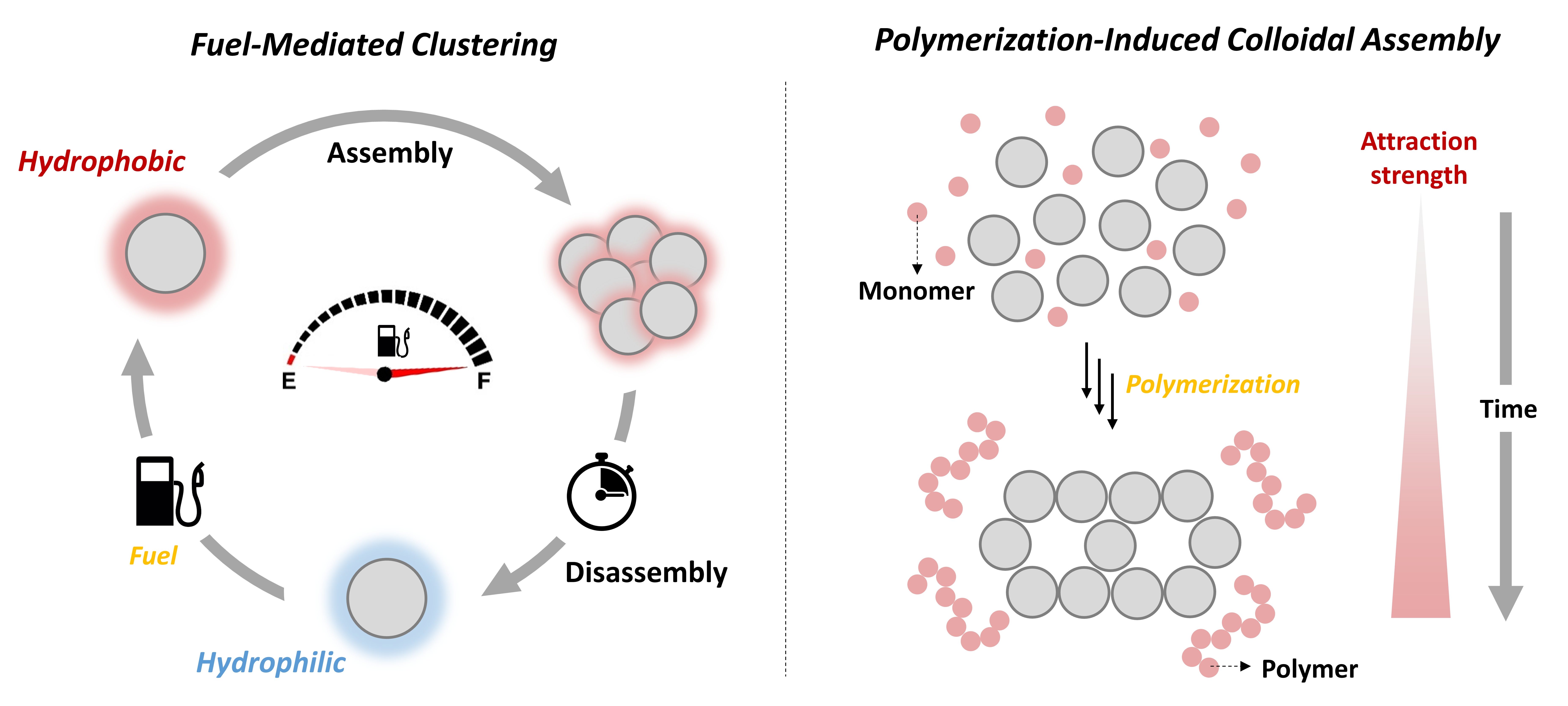Error loading player: No playable sources found
3545659
Bio-inspired out-of-equilibrium colloidal assembly
Date
April 12, 2021
Related Products
Chemical signal regulated injectable coacervate hydrogels
In the quest for stimuli-responsive materials with specific, controllable functions, coacervate hydrogels have become a promising candidate, featuring sensitive responsiveness to environmental signals enabling control over sol-gel transitions…
Alkyl spacer effects on supramolecular pathway selection of a flexible bolaamphiphile in aqueous solution
Understanding the pathway complexity of supramolecular polymer is essential to perform controlled supramolecular polymerization (CSP)…
Multivalent interaction-mediated colloidal propulsion and self-organization in nucleotide gradient
The intricate ability of living beings to sense and react to chemical gradients via targeted motion and chemical reactions depends majorly on multivalent interactions. However, the role of multivalency on the formation of assemblies, the transportation of colloids, and phoresis remains unexplored…
Janus colloid like active motion observed for symmetrical catalytic colloids
Catalytic Janus colloids represent one of the most experimentally explored examples of self-motile active colloid systems, and are well known to exhibit Active Brownian Particle like trajectories…



